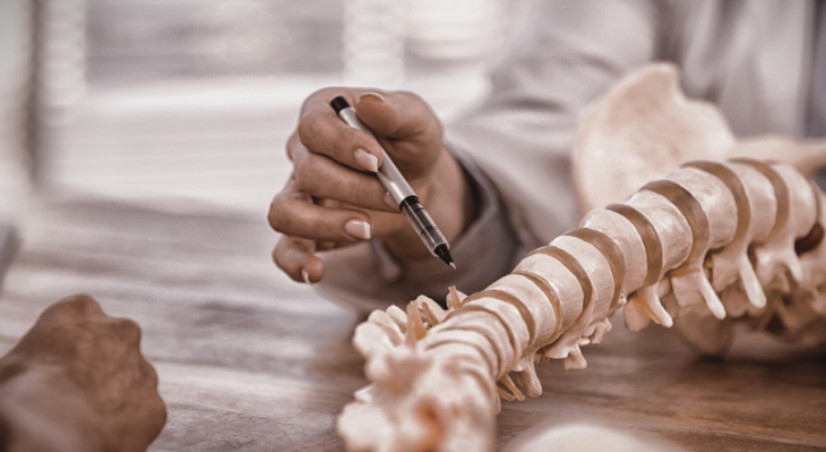
A Guide to the Functionality of Your Spine
The movements we take for granted wouldn't be possible without a healthy spine. Thanks to your strong backbone, you can jump over a puddle, bend to pick up your dropped keys, or twist to reach your lunch in the backseat of your car.
The Parts of the Spine and What They Do
The spine is made up of small bones called the vertebrae that protect the spinal cord, support your body and help you move easily. Each vertebra contains a rounded section, known as the vertebral body, and finger-like projections called processes. The muscles in your back are attached to these processes with bands of connective tissues called tendons. Ligaments connect the vertebrae together and help keep your spine stable when you move.
The spinal cord, a thick bundle of nerve fibers that transmit impulses from the brain, passes through a hollow area in the middle of the vertebra. These impulses keep your organs and immune system functioning properly, tell your muscles to contract when you move, and control breathing and other bodily functions. Nerves branch out from the spinal cord and travel to the various parts of your body.
Vertebrae also contain facet joints, sections of cartilage where two vertebrae meet. Facet joints are responsible for the flexibility and stability of your spine and help you turn, twist and bend. Small rubbery discs between each vertebra cushion your spine and absorb shock.
Your spine isn't perfectly straight but forms an "S" shape. This shape keeps your weight evenly distributed, enhances flexibility, and reduces pressure on your back.
The 33 vertebrae in your spine are divided into these five sections:
- Cervical Spine: The cervical spine starts at the base of your head and contains seven vertebrae. These vertebrae support your head and neck and make it possible to turn your head.
- Thoracic Spine: The 12 thoracic vertebrae start at the bottom of your neck. They connect to your ribs and help support your chest and torso.
- Lumbar Spine: Five lumbar vertebrae make up your lower back. Since this area supports most of your body's weight, it's the most frequently injured part of the back.
- Sacrum: The sacrum is a triangular piece of bone formed of five vertebrae fused together. The sacrum connects to the hips and doesn't move, unlike your other vertebrae. It supports your pelvis and keeps it stable.
- Coccyx (Tailbone): Your tailbone is actually made up of four vertebrae fused together. Although this part of the spine also doesn't move, it provides an anchoring point for ligaments and muscles in your pelvis.
Common Causes of Back Pain
Pain in your spine can occur for many reasons, including:
- Problems with Discs: Disc herniation, a problem that occurs when the soft inner core of the disk protrudes through the tough outer covering, can cause pain, numbness, and tingling. Herniated discs can occur due to injuries or aging.
- Arthritis: Arthritis can affect any joint in your body, including the facet joints in your back.
- Subluxations: Subluxations occur when the vertebrae become misaligned. Injuries can cause subluxations, they can also occur if you sit for long hours or have poor posture.
- Tight Muscles: Muscle tension can cause backaches and may be related to subluxations. Misaligned vertebrae tend to pull on muscles, causing pain and tension.
- Sprains and Strains: Strains or sprains in the muscles and ligaments in your back can happen if you lift a heavy object or twist your back too far.
- Pinched Nerves: Misaligned vertebrae, tight muscles, or herniated discs may press against the nerves in your back, triggering pain, tingling, numbness, or weakness.
- Scoliosis: Scoliosis, a condition usually diagnosed during childhood, occurs when the spine curves sideways. Back pain and muscle spasms can be related to scoliosis. You may also notice that one shoulder is higher than the other.
As much as we rely on our spines, it's not surprising that back pain is a common complaint. In fact, 80% of Americans can expect to experience back pain at some point in their lives, according to statistics from the American Chiropractic Association.
Chiropractic treats the source of back pain and helps keep your spine properly aligned. Are you frustrated by nagging back pain? Give us a call and we'll help you make an appointment with a chiropractor.
Sources:
American Chiropractic Association: Back Pain Facts and Statistics
National Center for Biotechnology Information: How Does the Spine Work? 2/14/19
University of Maryland Medical Center: A Patient’s Guide to Anatomy and Function of the Spine
